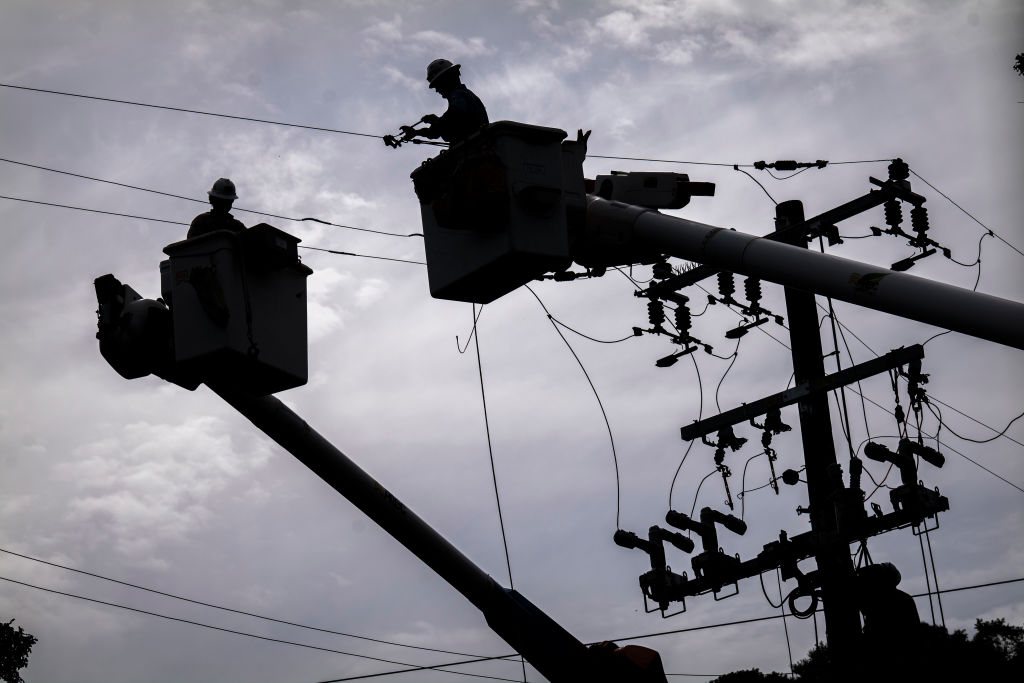
Officials Prepared to Return Abrego Garcia—Until Trump Intervened
April 25, 2025
Trump’s Cruel Policies Are Tanking His Poll Numbers
April 25, 2025A new trial highlights the ongoing fight for justice at FCI Dublin, where systemic sexual abuse by prison staff shattered lives and exposed deep failures in federal oversight.
Sexual abuse of female inmates in federal prisons is an open secret.
According to a bipartisan report from the Senate’s Permanent Subcommittee on Investigations, the Bureau of Prisons opened over 5,000 cases alleging sexual abuse by federal employees from 2012 to 2022. Sen. Jon Ossoff, a Democrat from Georgia who led the investigation, said, “Our findings are deeply disturbing and demonstrate in my view that BOP is failing systemically to prevent, detect and address sexual abuse of prisoners by its own employees.”
The trials of prison guards at Federal Correctional Institution (FCI) Dublin in Dublin, Calif., stand out as a case and point.
Earlier this month, a jury of 10 men and two women was unable to come to a unanimous decision after a week’s deliberation. They were judging the trial of former correctional officer Darrell Wayne Smith, nicknamed “Dirty Dick,” accused of 15 counts of sexual misconduct. Smith was the last correctional officer to be charged with abuse at the now-shut-down FCI Dublin, as part of a sprawling federal investigation that convicted seven officers, including the prison’s warden and chaplain.
A new trial for Smith had initially been scheduled for September, but Judge Yvonne Gonzalez Rogers moved it up to the summer, with jury selection to begin Aug. 20.
The rampant sexual abuse at FCI Dublin resulted in a historic civil settlement for over 100 women who alleged abuse and mistreatment by correctional officers there, forcing a $116 million settlement by the U.S. government.
Prior to the settlement, Rogers had appointed a special master to report on the progress the prison had made in providing mental and physical care to the inmates of FCI Dublin. This progress report came after Rogers spent hours touring the facility, during which she described the prison as a “dysfunctional mess.”
Unsurprisingly, the special master found ongoing systemic abuse and inadequate mental and physical healthcare provided to the inmates at FCI Dublin, writing, “It is unconscionable that any correctional agency could allow incarcerated individuals under their control and responsibility to be subject to the conditions that existed at FCI Dublin for such an extended period of time.”
The prosecution at Smith’s trial included the testimony of a dozen women who accused Smith of groping them, masturbating while watching them shower, and forcing them to have sex with him.
One woman alleged Smith had abused her inside a facility supply closet, confessing, “The defendant’s abuse broke me. It finished me.”

According to Assistant U.S. Attorney Andrew Paulson, Smith abused incarcerated women for years at FCI Dublin, beginning in 2015. He also noted that Smith often arrived at work not in his uniform cargo pants and button-down shirts, but in flannel shirts and a cowboy hat.
Smith was essentially enabled to continue this abuse without punishment. The prosecution argued that the system put in place by the Bureau of Prisons to investigate complaints was a dead end. “It was like calling 911 and hearing your attacker’s lawyer pick up the phone,” they analogized.
Additionally, video camera footage at FCI Dublin was held only for a short period of time before being recorded over. According to journalist Lisa Fernandez, who covered the trial, “There is no physical evidence in a prison because there are no real cameras in places: They don’t wear body cams, the women aren’t allowed to have cameras, and no one’s giving them rape tests. So I don’t think there’d ever be physical evidence.”
The defense’s closing argument, given by attorney Naomi Chung, argued that the women defendants shouldn’t be believed because they were felons. She also attempted to paint Smith as the victim, a low-level guard who was not respected by colleagues or inmates.
During Smith’s month-long trial, six victims took the stand to testify to the abuse they had experienced. The California Coalition of Women Prisoners, an advocacy organization that supports incarcerated women, along with other supporting organizations arrived in court wearing teal, the color associated with sexual abuse survivors. They were a consistent presence throughout the month-long trial.
Cassandra, one of the women who spoke in Smith’s trial about the abuse she experienced, said, “I testified in this trial because the truth matters, because people in prison deserve safety and dignity just like anyone else. We are not disposable. We are not invisible. What happens behind those walls needs to be seen and heard.”
When asked what it was like to see Smith in person again during the trial, Cassandra said, “It was very empowering. At first, I thought like I wasn’t gonna look at him, or I was gonna be afraid. But then, once the opportunity was there, it felt very empowering. I definitely locked eyes with him a couple of times, and I just felt good.”
In addition to the convictions of seven correctional officers at FCI Dublin, a consent decree was won in the class-action lawsuit, which created systemic protections for hundreds of incarcerated individuals who suffered systemic staff sexual abuse, retaliation, and medical neglect in the Bureau of Prisons’ custody. The decree began at the end of March 2025 at over a dozen federal women’s prisons nationally and remains enforceable for the next two years.
As to why the jury wasn’t able to convict Smith, Fernandez points to the fact that the prosecution used the testimony of the same women who testified in the civil settlement case, which awarded nearly $116 million to plaintiffs. Because the same women who testified in the civil settlement were called upon to testify against Smith, “The defense was able to use that as a strategy and say, ‘You got money for this, right?’ And so many of these women who did testify were part of that civil settlement and did get money for it.”
One of the jurors in Smith’s mistrial reported that the settlement played a role in the jury’s decision, explaining that some jurors thought the women had an incentive to lie because of this civil settlement.
Perhaps if federal prosecutors bring new defendants to the retrial—women who were not part of the civil settlement—the jury will come to a different conclusion in regard to Smith’s alleged sexual abuse crimes.
For now, we can only hope.
Great Job Leslie Absher & the Team @ Ms. Magazine Source link for sharing this story.





